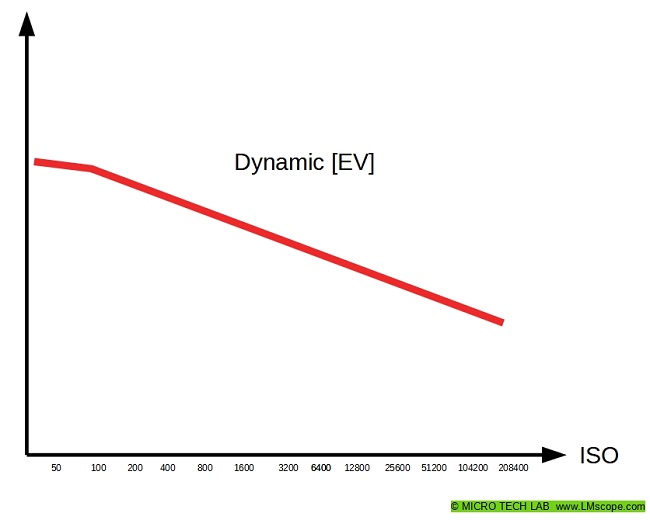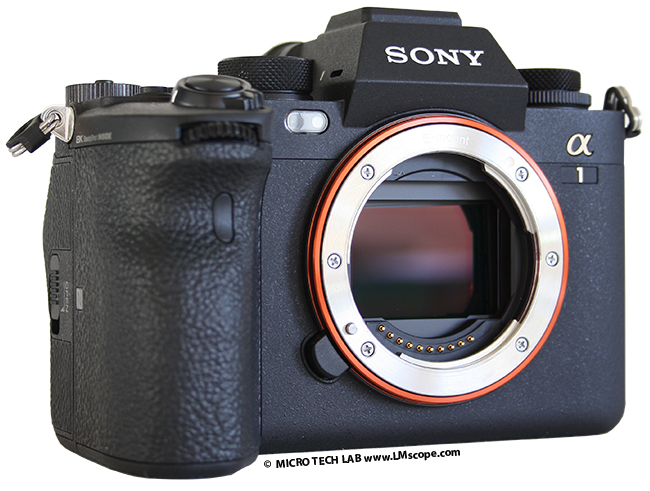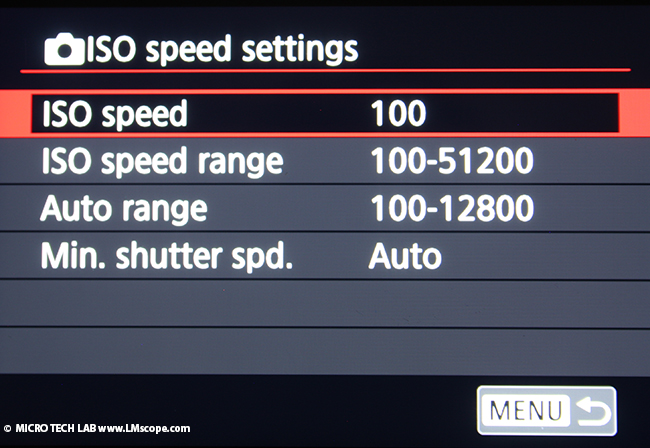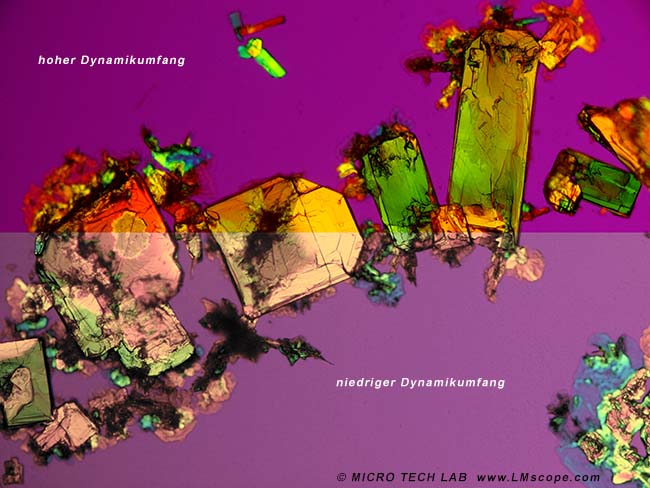

Mastering microscope photography: Achieve better image quality with low manual ISO settings of 50 or 100
In microscopy, the specimens observed are mostly static, i.e. they are immobilised and do not move when placed on the specimen stage: material samples of metals or plastics, rock samples, mechanical components, or even fixed histological specimens. This unique aspect of microscopy has the great advantage that the exposure time can be freely selected and that longer exposure times can be used because there is no risk of motion blur. Additionally, microscopes have powerful, adjustable lighting systems with high light intensity.

Because digital camera sensors have the highest dynamic range at low ISO settings, it is sensible to manually select a low ISO range. The lowest ISO setting of most current camera models is 50 or 100.


The dynamic range is the quotient of the largest and smallest amount of light intensity the camera can capture, i.e. the brightest and the darkest point in the image.
If the dynamic range is high, the image will have high contrast and a wider range of colours and brightness levels. This brings out the smallest microscopic details in the image and produces the perception of higher image quality for the observer.

Comparison: high vs. low dynamic range
Photography:
Fitting the microscope to digital single-lens reflex (DSLR), mirrorless interchangeable-lens cameras (MILC ), digital single-lens mirrorless (DSLM) or C-mount cameras is easy with our LM digital SLR adapters, which feature a plan achromatic optical system. Our products make it possible to capture top-quality microscope images. To help you select the adapter that is right for your camera, we have set up an online configurator on our website. You can also email us – ideally with attached photographs of your microscope.
Modern DSLR and single-lens mirrorless (DSLM) offer the latest technology and are generally very well suited for microscopy applications. Most of them can be controlled remotely via PC/Mac. Because of their high sales volumes, they offer an excellent price/performance ratio compared to special-purpose microscope cameras.
Features of top DSLR and single-lens mirrorless cameras (DSLM):
- Large, powerful full-frame sensors (36 x 24 mm)
- Sensor resolution of 61 megapixels or 240 megapixels with Pixel Shift technology
- High light sensitivity (ISO 400,000+)
- Extensive dynamic range (up to 15 aperture stops/f-stops)
- Short exposure times (1/8000 second) up to 1/32,000 seconds using the digital shutter
- 4K Ultra HD or 8K Ultra HD video function
- Live video capture on external monitors in ultra HD quality
In most cases, these cameras are significantly more powerful than microscope cameras with smaller sensors (1/2" or 2/3"). On our website you will find our current camera recommendations and a camera ranking which is specifically tailored to microscopy applications.